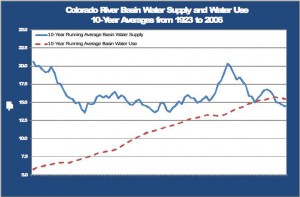This was the best nighthawk week I’ve had in my yet young birding career.
I’ve sort of vaguely watched birds since I was a kid, something I picked up from my mother. When Lissa and I got married, mom and dad passed on their Peterson’s guide, and we made a tradition of taking it with us on vacation and writing the birds we saw in the margins. But I didn’t really get hard core until a couple of years ago, when I spent time with University of New Mexico ornithologist Chris Witt for a piece on bird genetics. I had asked Chris to come up with a specific example from around here to make his genetic work meaningful. He pointed out the surprising genetic link he and his colleagues had found between hummingbirds and nighthawks, both of which are birds that he sees in his backyard.
Maybe he does, but I didn’t. Hummingbirds are easy, but nighthawks, which come out to hunt bugs at night, are elusive. So I’ve always got my eye out for them.
I spotted one from our backyard two years ago, and another one Saturday afternoon last year up along the Rio Grande, plus a few this spring over farm fields in Yuma, down on the Lower Colorado.
But this week was a nighthawk bonanza.
 Wednesday evening, I was birding along a pond out by the Rio Grande when a nighthawk flew in low and circled. Best look I’d ever gotten as it took several passes around the pond dining.
Wednesday evening, I was birding along a pond out by the Rio Grande when a nighthawk flew in low and circled. Best look I’d ever gotten as it took several passes around the pond dining.
Then last night, I was up in the mountains with Lissa and my sister, Lisa. We’d been watching a jay up in a pine tree when Lisa said, “What are those?” High in the sky, a bunch of birds flying overhead, headed north. The long narrow wings with white bars were unmistakable – a dozen nighthawks, then shortly after, two more, then a few more a bit later.
One other reason to love nighthawks is the name. Edward Hopper’s 1942 painting has always been a favorite.


 Wednesday evening, I was birding along a pond out by the Rio Grande when a nighthawk flew in low and circled. Best look I’d ever gotten as it took several passes around the pond dining.
Wednesday evening, I was birding along a pond out by the Rio Grande when a nighthawk flew in low and circled. Best look I’d ever gotten as it took several passes around the pond dining.


